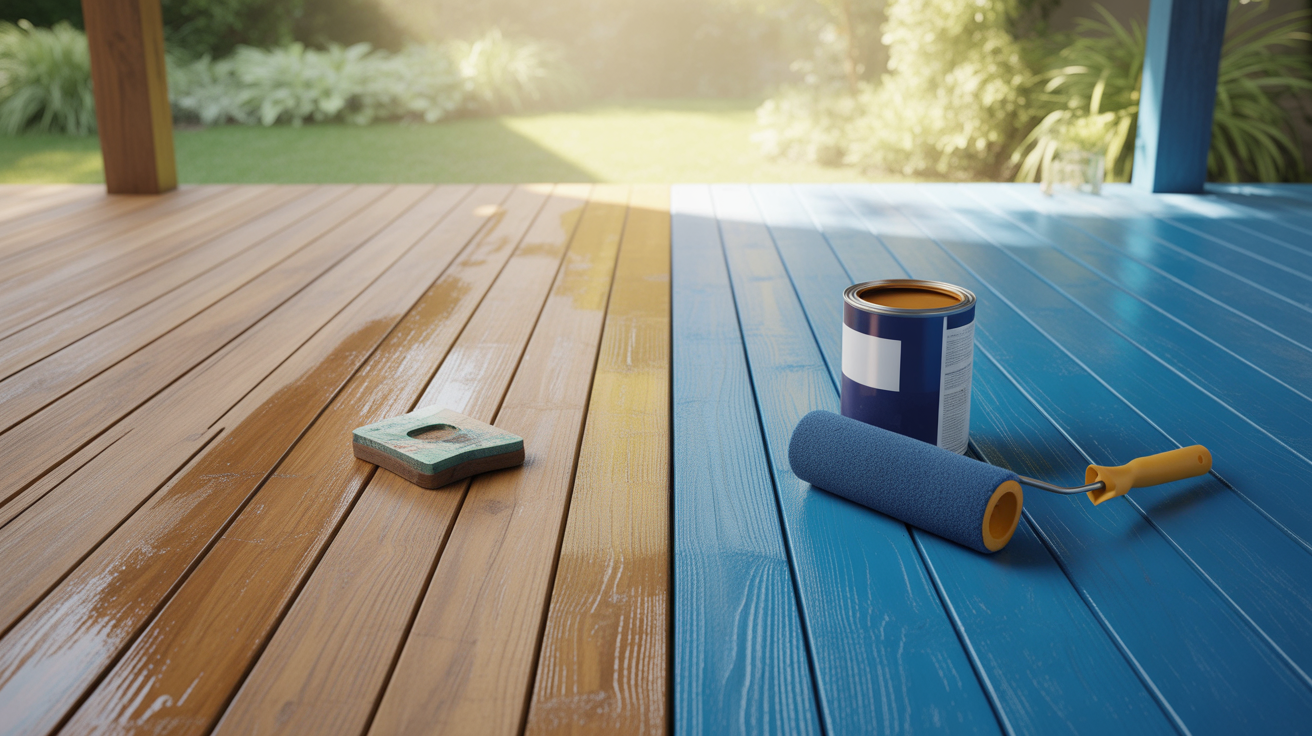Choosing between solid stain and paint can be confusing, especially when you want a durable, great-looking finish.
If you’re working on a deck, fence, or wooden wall, the right finish can make all the difference. I’ve simplified the process to help you make the best choice for your project.
You’ll learn the benefits of each option, how long they last, and how easy they are to apply. No jargon, just the key facts to help you save time, money, and avoid mistakes.
Whether updating an old surface or painting something new, this guide will give you the confidence to get it right the first time.
What Is Solid Stain?
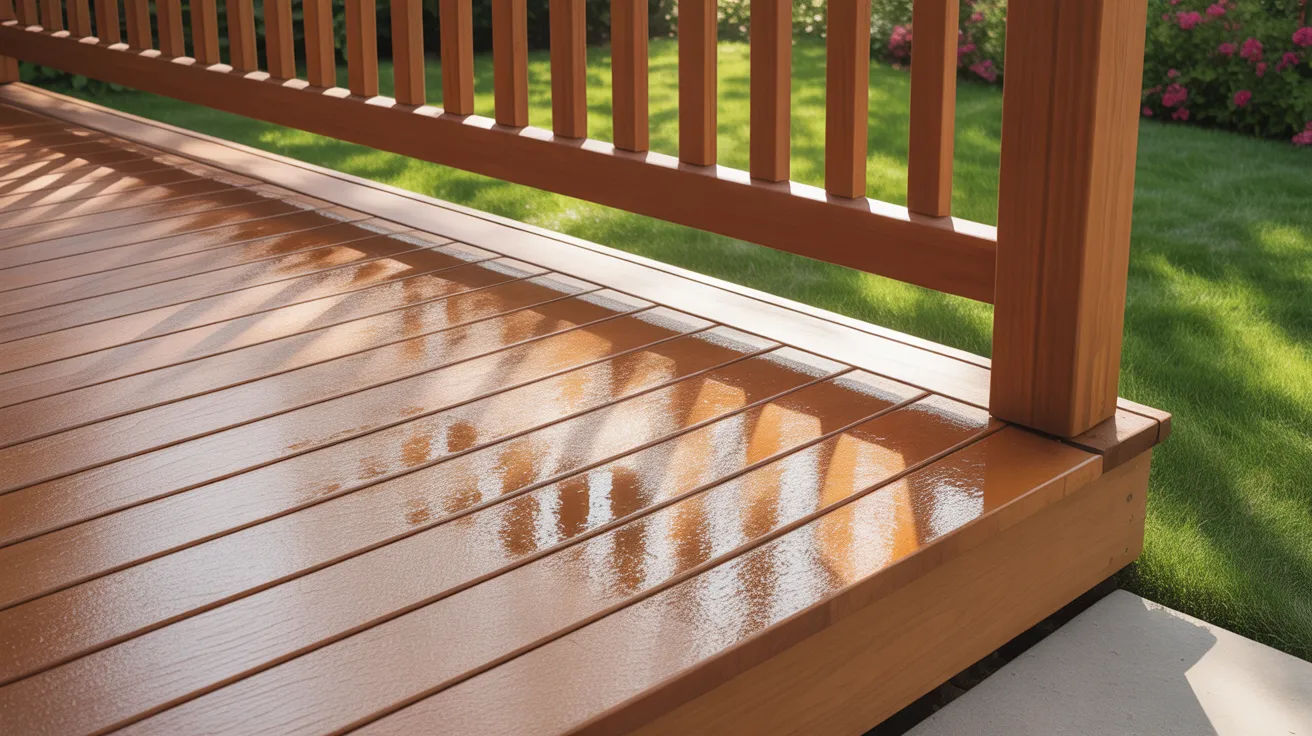
Solid stain is a thick, colored coating that protects wood while allowing some texture to show.
Often used on decks, fences, and outdoor siding, it blocks sunlight and water and hides imperfections.
Unlike paint, it doesn’t peel easily and requires less surface prep. Solid stain provides a smooth finish while soaking in enough to stay in place.
It’s ideal for weathered wood or outdoor surfaces with a rough texture. If you’re looking to refresh an outdoor area, solid stain is a great option.
What Is Paint?
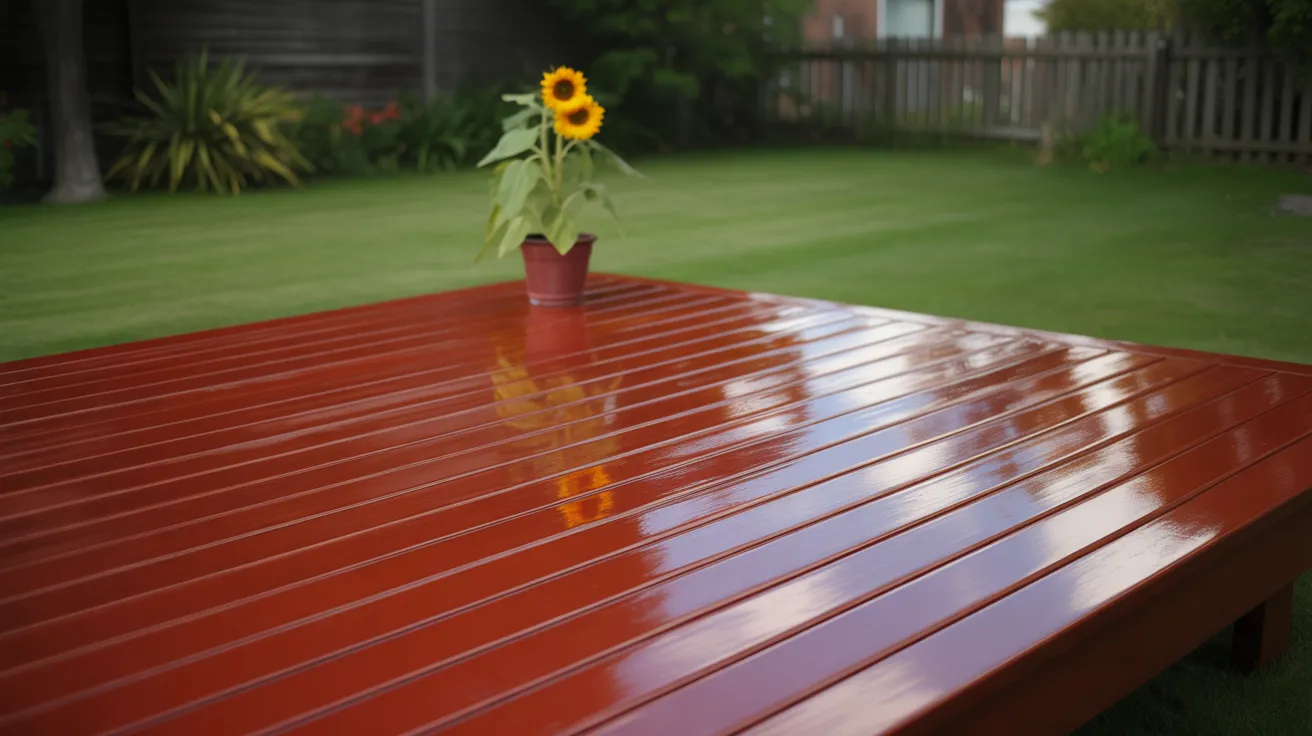
Paint is a thick liquid that provides full coverage and protection, hiding the wood grain and any marks beneath.
It’s ideal for a smooth, clean finish on doors, trim, siding, and furniture.
Available in various colors and finishes like flat or glossy, paint offers long-lasting durability but requires more prep, such as sanding or priming.
While it can chip or peel over time, especially with water exposure, it’s a great choice for bold, solid coverage on both new and older surfaces.
If you’re up for a little extra work, paint might be the best option.
Solid Stain vs. Paint: Comparison
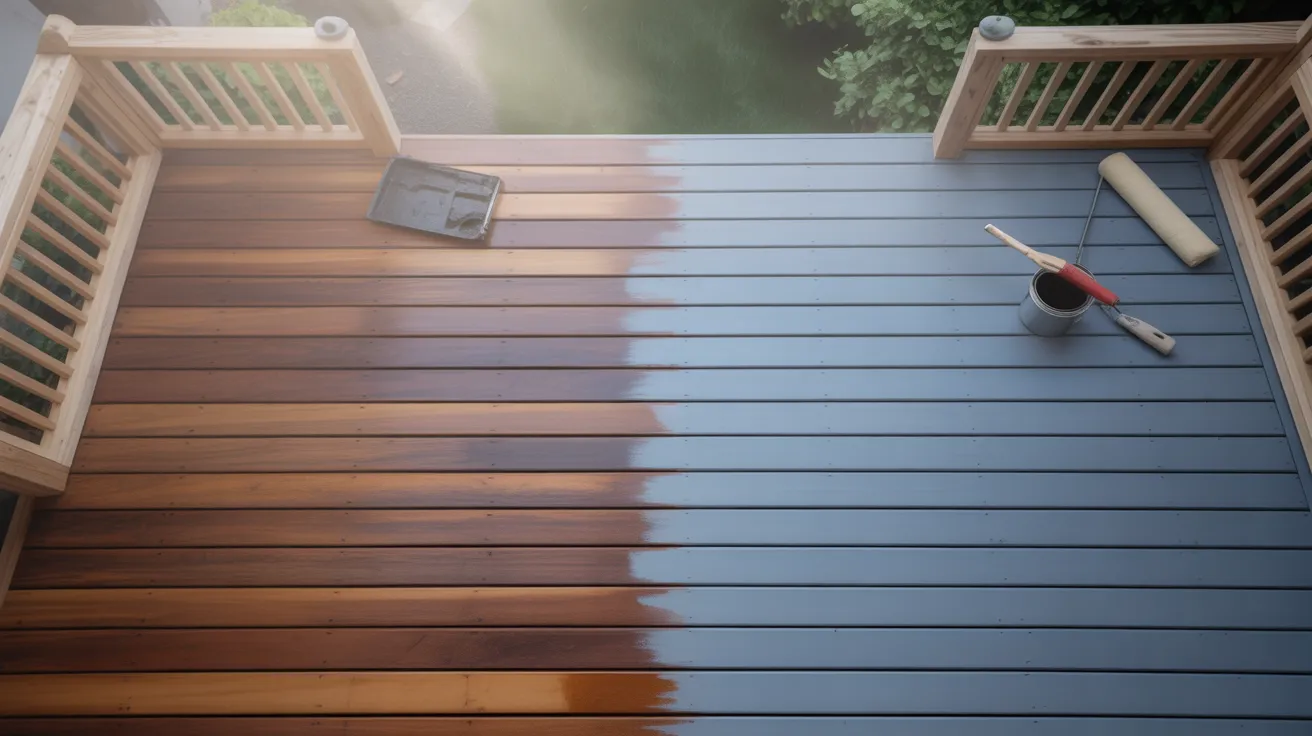
Choosing between solid stain and paint can feel tricky, but a side-by-side look can make things clearer.
Cost Comparison
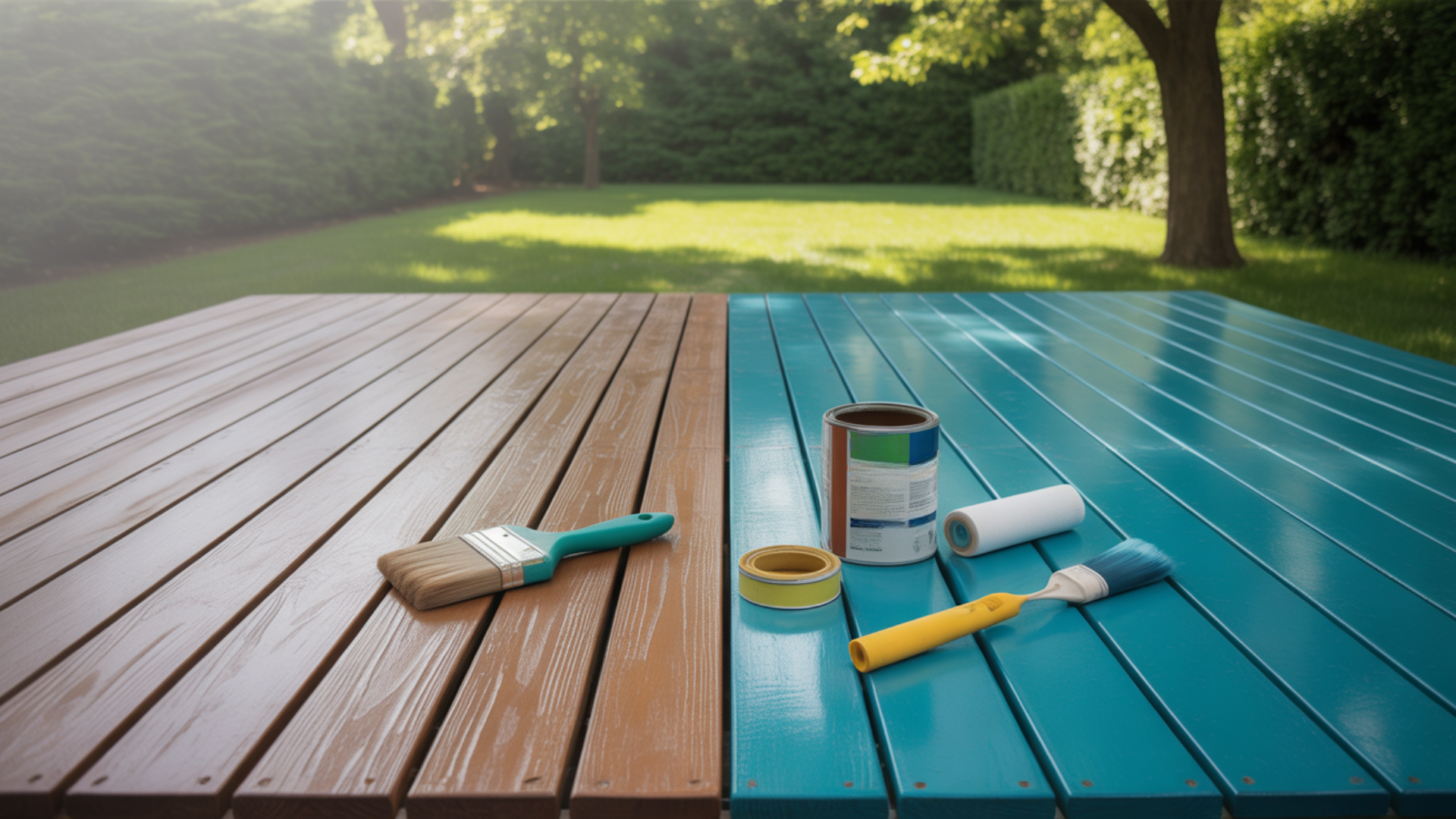
When it comes to cost, solid stain is typically cheaper to buy and easier to apply, saving you on materials and labor.
It often requires less prep work and no primer, making the process faster.
Paint, however, usually costs more upfront. It requires primer and takes more time for a smooth, even finish.
While paint can last longer and needs fewer touch-ups, solid stain may need more frequent reapplications, especially on high-traffic areas like decks.
Choosing the right option depends on your project needs and how much maintenance you’re willing to handle over time.
Environmental and Surface Impact
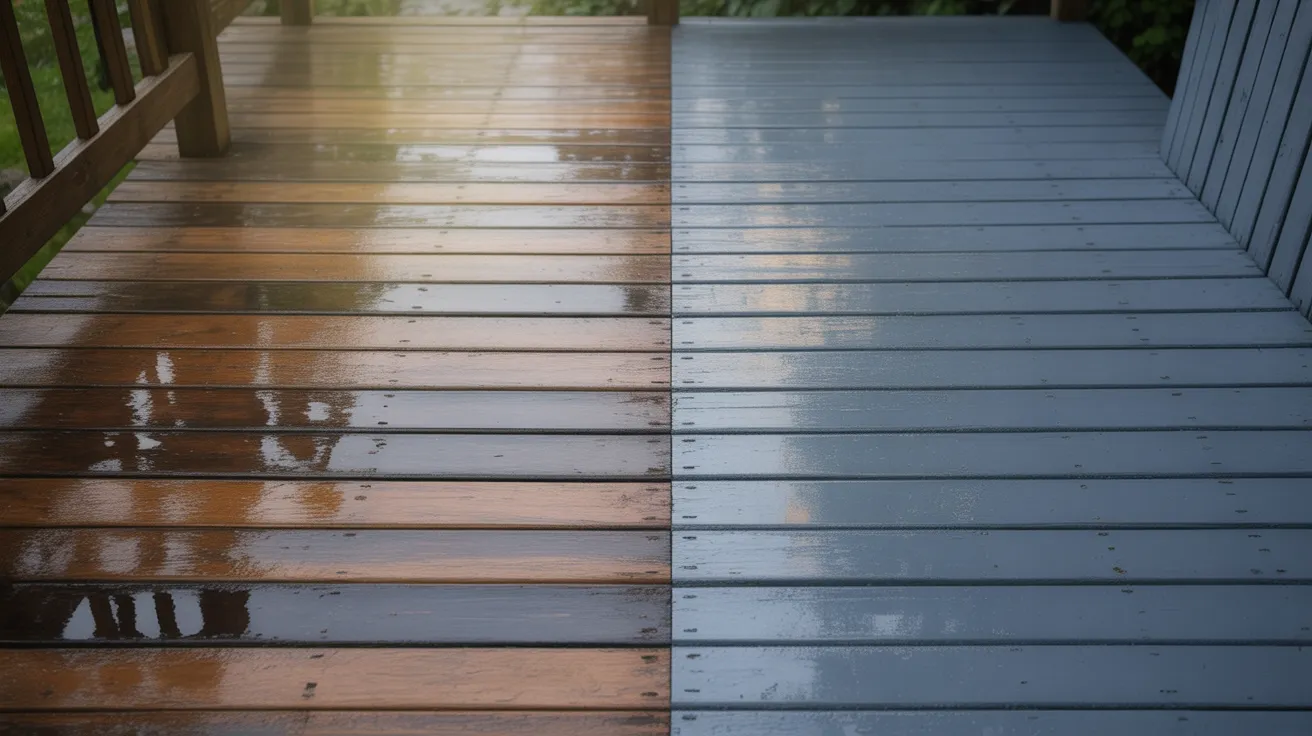
Solid stain allows the wood to breathe, letting moisture escape and preventing rot, cracking, or peeling. It’s ideal for older, weathered wood as it doesn’t trap moisture.
Paint, on the other hand, creates a thicker seal that can block water but may trap moisture already in the wood, causing peeling or bubbling.
It often requires extra prep on older surfaces to ensure it sticks.
For older wood or damp areas, solid stain is often the safer choice, helping maintain the wood’s integrity.
This quick chart shows how each one compares in key areas like protection, prep work, and cost.
| Feature | Solid Stain | Paint |
|---|---|---|
| Look | Hides wood grain slightly, shows texture | Fully covers wood and texture |
| Protection | Good protection from the sun and rain | Strong barrier against the weather |
| Surface Prep | Less sanding or priming needed | Often needs sanding and priming |
| Peeling | Less likely to peel | Can peel or chip over time |
| Finish | Matte or low-shine | Many options: flat, satin, gloss |
| Best Use | Decks, fences, and older wood | Siding, trim, doors, and smooth surfaces |
| Application | Easier to apply on rough wood | Needs more care for a smooth finish |
| Lifespan | Lasts several years with upkeep | Can last longer with good prep |
| Cost | Usually a bit lower | Often more expensive over time |
When to Use Solid Stain
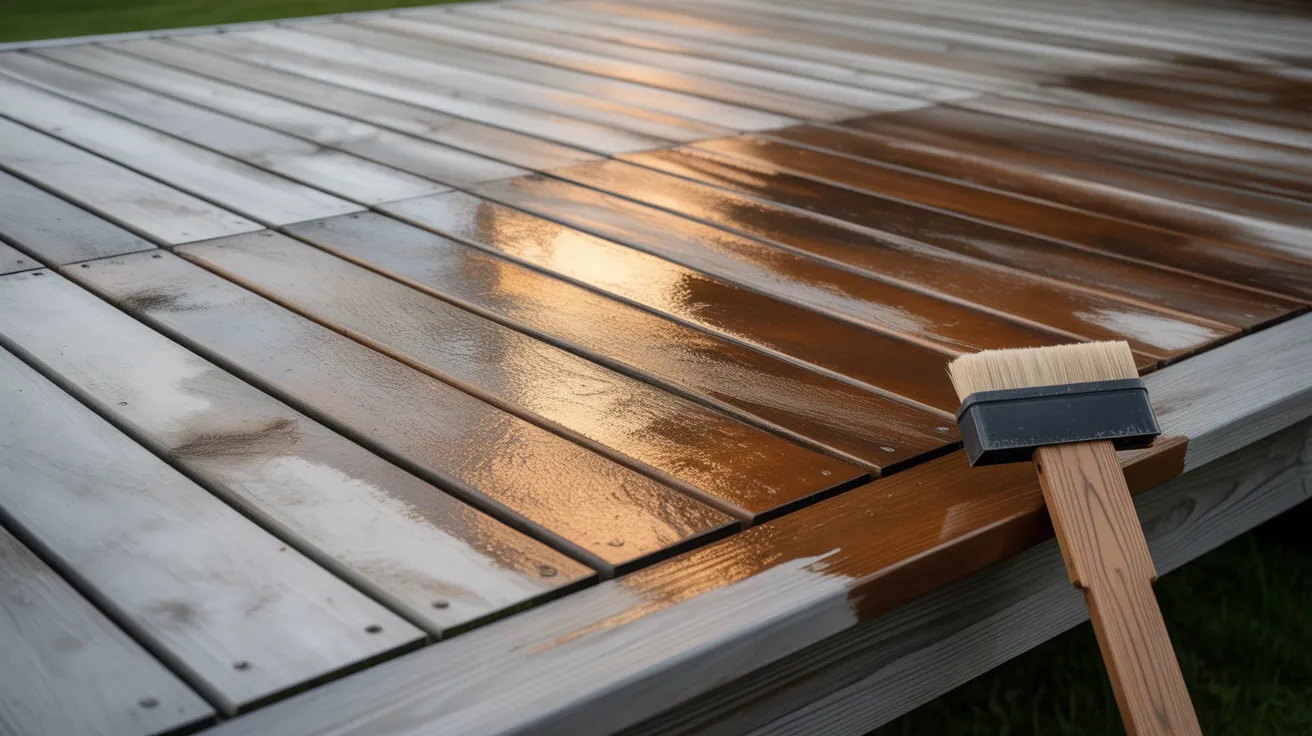
- Ideal for Rough or Weathered Wood: Perfect for decks, fences, and outdoor siding that need refreshing.
- Minimal Prep Required: Soaks into wood with little effort, making it great for older surfaces.
- Durable in Harsh Conditions: Less likely to peel, ideal for surfaces exposed to sun, rain, or heavy use.
- Covers Cracks and Marks: Helps cover imperfections while still allowing the wood’s texture to show through.
- Easy to Reapply: Great for touch-ups and maintenance, ensuring a longer-lasting finish.
- Low-Shine Look: Gives a clean, matte appearance without a glossy finish.
When to Use Paint
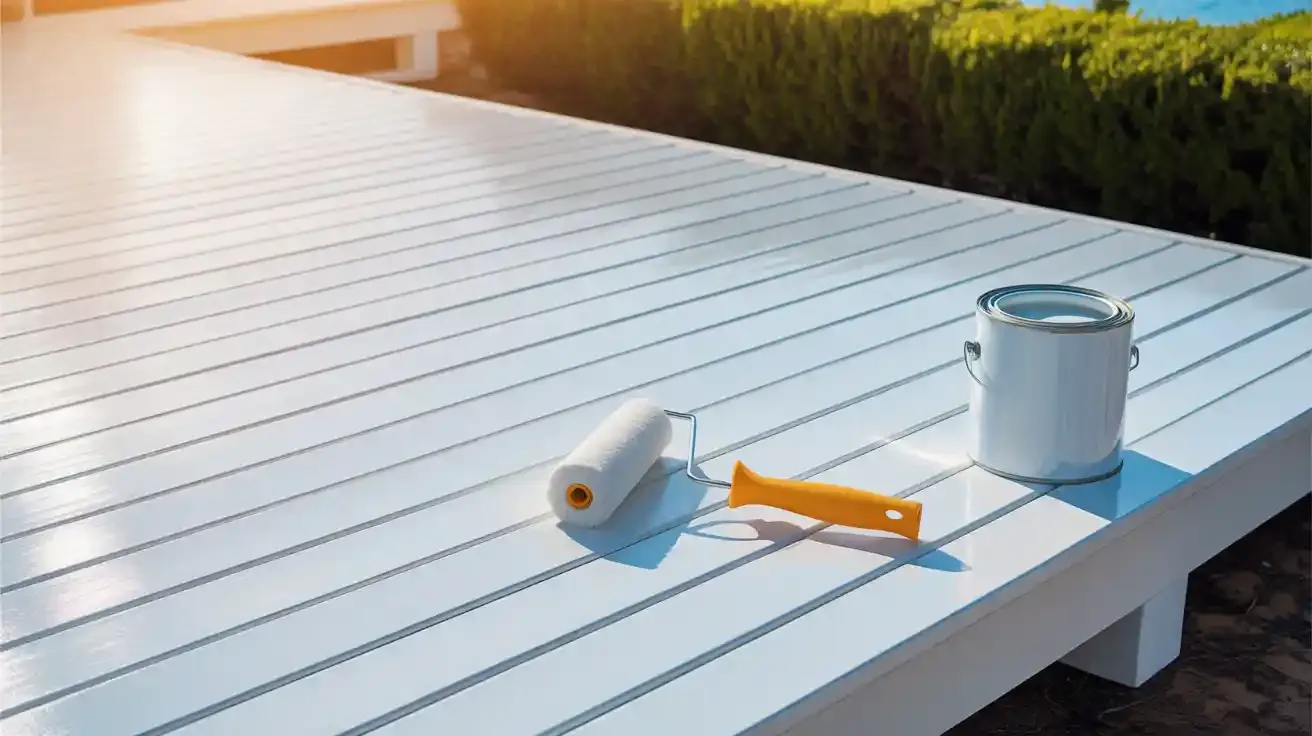
- Perfect for Full Coverage: Ideal for trim, doors, siding, and furniture with a bold, smooth finish.
- Blocks Moisture and Sunlight: Forms a thick layer that protects surfaces from weathering.
- Best for Dry Climates: Performs well on surfaces that stay mostly protected, as trapped moisture can cause peeling.
- Hides Imperfections: Offers a solid color that covers flaws and imperfections.
- Requires More Prep: Needs additional preparation, like sanding and priming, for best results.
- Long-Lasting Color: Works well for a durable finish but may require more maintenance and touch-ups over time.
Key Factors to Consider When Choosing
- Surface Type and Age: Solid stain is ideal for rough, weathered wood; paint suits smooth or previously painted surfaces.
- Desired Look and Color: Stain shows wood texture; paint gives full, solid color coverage.
- Weather and Sun Exposure: Paint offers a strong seal; stain handles moisture better and allows the surface to breathe.
- Maintenance Preferences: Stain is simpler to reapply; paint lasts longer but needs more prep and may peel.
- Project Type: Use stain for decks, fences, and siding; choose paint for trim, doors, and indoor or smooth projects.
Conclusion
Choosing between solid stain and paint doesn’t have to be hard. I hope this helped you see the clear differences so you can pick what works best for your project.
If you want something quick that shows a bit of the wood’s texture and is easy to keep up, solid stain might be your best bet.
However, if you’re looking for full color and don’t mind spending more time on preparation, painting could be the right choice.
Consider your surface, the weather in your area, and the amount of time you’re willing to spend on future upkeep.
Take a look at your space, decide what matters most to you, and go with the one that fits your needs best.
If I had to choose, I’d pick the one that makes my job easier and lasts longer for the space I have.

